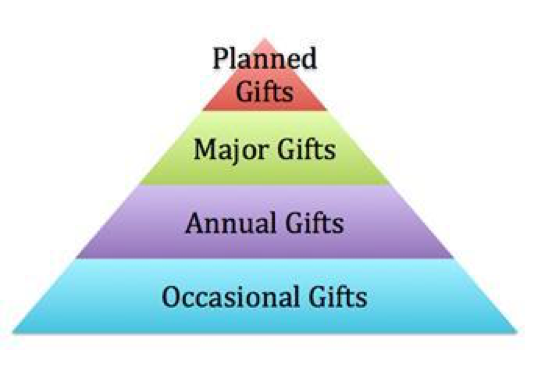Donor Stewardship: Guiding Donors to The Next Level of Support

Stewardship is defined as the “responsibility of overseeing and protecting something considered worth caring for and preserving.” As nonprofits know well, preserving relationships with donors is imperative to an organization’s success.
In philanthropy, the donor stewardship process begins with a donor’s first gift—the end point of the cultivation stage—and is a vital component of your donor retention strategy. However, many nonprofits are still struggling to build a donor stewardship plan that nurtures donors beyond the first gift— 3 out of 4 new donors leave and never come back.
According to the latest research from the Charitable Giving Report:
- The average donor retention rates for first-year offline-only donors is 29%
- The average donor retention rates for first-year online-only donors is 21%
Building a customized donor stewardship plan will help you keep donors engaged and combat declining donor retention numbers.
The Donor Stewardship Pyramid:
The first step in building a donor stewardship plan is understanding the various levels of donor engagement. In order to move donors to higher levels of commitment, you must understand the journey and steps required to guide them.
The commitment from the donor will reflect their stewardship level. A supporter’s first few gifts might be occasional, or the donor might align directly in the major gifts category. Either way, your stewardship plan will determine when a donor should transition to the next level. Each donor will transition on their own time, and you must be sensitive to this unique process. For example, it could take a few years for an occasional donor to transition to an annual donor and even longer to become a major donor. There are no industry standards to help you determine donor levels—they will vary and reflect each organization’s unique donor base. However, by paying attention to trends in your donor database, you can begin finding supporter trends that will signal when a supporter is primed to take the next step.
As you engage donors, your focus should be on guiding them up the donor pyramid—to the next level commitment.

As we can see with the retention rates of first time donors, new donors need the most stewarding, regardless of the level of the gift. According to Adrian Sergeant, a 10% increase in donor retention can increase the lifetime value of your donor database by 200%. Once the new donor transitions to an annual donor, odds of ongoing commitment increase.
Many organizations focus on engagement with their major donors; however, even the new donor that gives $20 should receive an email stating what other steps they can take to increase involvement. All donors should receive a stewardship level.
Here are five essential steps to guiding donors to the next level of support for your cause:
1. Communicate with your supporters
Communication is the first rule in stewardship. Once the donor gives, regular contact (and a thank you) is a priority. A donor shouldn’t be contacted for financial support only. They enjoy updates, news about your successes, and insight into how their funds are driving impact.
Communication tactics can vary among donor levels.
| Communication Type | Occasional Gifts | Annual Gifts | Major Donor | Planned Giving |
| Thank You Letter | X | X | X | X |
| Handwritten Note | X | X | ||
| Phone Call | X | X | ||
| Social Media | X | X | X | X |
| Newsletter | X | X | X | X |
| Email Blast | X | X | X | X |
A general thank you letter should be mailed for every gift within two days of entering it in the database—even if they made their gift online. This will serve the donors’ needs for annual tax preparations and confirms you have received their contribution (and that you appreciate their support!). Quarterly newsletters, email blasts with stories, events and strategic plans are a few examples of how to communicate with your donor base. A strong engagement process with informative updates will keep support for your organization top of mind.
Pro Tip: If the gift is substantial, the CEO, DOD or a board member should also compose a handwritten note, followed by a phone call. Include information about current goals and future initiatives in your ongoing donor communication plan.
2. Involve supporters in your mission
Involve donors in your mission, first-hand. Allowing them to be a part of your struggles and successes will lead to a greater understanding of your organization. This will strengthen your relationship and, in turn, possibly lead to a larger donation. For example, if a major donor has led the efforts of a sea turtle rehabilitation program, allow them (and possibly their family) to help with special tasks. Invite them to watch certain procedures and be a part of the experience of releasing the reptile back into the wild. This increases their connection with your mission and helps them to see first-hand how their financial support is impacting your cause.
Pro Tip: Consider personally inviting certain members and donors to fundraising events or functions that would interest them and/or their family. Family involvement is always pleasing to the donor.
3. Listen to feedback:
Listen to what your donors say. Donors who feel ignored won’t be donors for long. Ask their opinions, listen to their suggestions, and always follow up. If a donor approaches you directly about an idea, listen to it and ask questions. If it can be accommodated, let them know when it’s put into effect. However, if it’s an idea that cannot be accommodated, make sure to follow up with a timely explanation. Understand what the donor wants out of their commitment to your organization. Learn what their expectations are and communicate stories and ideas, when applicable. The level of the donor’s engagement will be a reflection of your ability to listen to their wants, needs and suggestions.
Pro Tip: Consider instituting a supporter town hall. This can be done virtually and would be a great way to designate a specific time for supporter feedback. What’s working and what’s not? What’s the volunteer experience been like and what ways can you all work together to recruit additional support? You can also use this time as a way to thank supporters for their support and demonstrate what you’ve accomplished together over the past few months.
4. Customize the donor experience:
Stewardship is all about customization. Each one of your donors is different, especially your major donors. People enjoy different aspects of your organization and give for varying reasons. One donor might support conservation while another is intrigued by your education program. Allow each person to experience your mission in their own way, while throwing in some once-in-a-lifetime experiences—this engages, entertains and empowers. Leverage your donors’ passions to create personalized experiences.
Pro Tip: If the donor has children and you are touring an aquarium, invite their family to join and allow them to do special feedings. Demonstrating the impact of your organization, especially to his/her own family, will increase your odds of a more meaningful relationship.
5. Focus on Building Connections:
Ongoing stewardship is imperative to keeping any donor truly engaged and connected. Try integrating their families, when applicable, into your efforts and mission and as time progresses, get to know each major donor personally. Ideally, your staff will meet their friends and family which, in turn, will provide opportunities for customizing stewardship.
Pro Tip: Maintain a database with their birthdays, anniversaries, career achievements, and other important milestones. Pay attention to their lives outside of your organization, and become well versed in their personal endeavors. Value the material they share with you, and use it to your advantage. Learn their passions, and share in their personal milestones. This will deepen their relationship with your organization with the prospect of ultimately increasing their involvement level.
Developing a stewardship plan will allow your staff to engage with each donor group. Remember that no two donors are alike and that a stewardship plan is primarily a guideline. Donors, especially major donors, want to engage with all levels of staff and see, first-hand, how their gifts are utilized. A fundraising rule of thumb reminds us that it’s easier to keep a donor than to acquire a new one.
A solid stewardship plan will help you retain your donors and allow them to move up the pyramid. In fundraising, stewarding can be fun and allows you to meet others while integrating yourself into the community. Have fun with stewarding your donors, and enjoy watching their loyalty increase.






